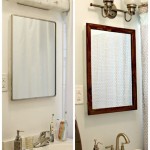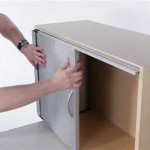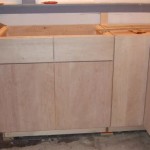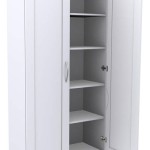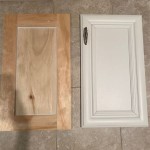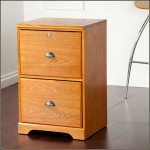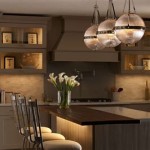What Size Should Kitchen Cabinet Knobs Be?
Kitchen cabinet knobs are a small but impactful detail in the overall design of a kitchen. They are the first point of contact when opening cabinets, and the size of the knob can greatly affect its functionality and aesthetic appeal. The choice of knob size should be carefully considered, taking into account factors such as cabinet door size, style, and personal preference.
Factors to Consider When Choosing Cabinet Knob Size
Several factors influence the ideal size of kitchen cabinet knobs. These factors include the dimensions of the cabinet door, the overall style of the kitchen, and the intended functionality of the knobs.
Cabinet Door Size
The size of the cabinet door plays a crucial role in determining the appropriate knob size. Larger cabinet doors generally accommodate bigger knobs, while smaller doors may look cluttered with oversized knobs. As a general guideline, a 1.25 to 1.5-inch knob is suitable for standard-sized cabinet doors. For smaller cabinet doors, 1-inch knobs are preferred. For large doors, consider using knobs that are 1.75 inches or larger.
Kitchen Style
The overall style of the kitchen is another important consideration when choosing cabinet knob size. Modern kitchens often feature sleek, minimalist knobs in smaller sizes. Traditional kitchens, on the other hand, may have more decorative knobs in larger sizes. The style of the cabinets themselves should also be considered. For example, flat-panel cabinets might look best with smaller, minimalist knobs, while shaker-style cabinets may benefit from larger knobs with more intricate details.
Functionality
The functionality of the knobs is also an important factor to consider. For example, if the kitchen is used by children or individuals with limited hand strength, it may be necessary to select larger, easier-to-grip knobs. Knobs that are too small may be difficult to grasp, particularly for individuals with arthritis or other hand conditions.
Choosing the Right Size for Different Cabinet Door Styles
The style of the cabinet door can influence the best size and shape of the knob. Different door styles often have different proportions and require different types of hardware. For example, raised-panel cabinet doors can handle a wide range of knob sizes and shapes, while flat-panel doors may be best suited to minimalist knobs.
Flat-Panel Doors
Flat-panel cabinet doors are characterized by their clean, simple design. They typically have a flat surface without raised panels or details. These doors often look best with smaller knobs that do not detract from the minimalist aesthetic. Knobs ranging from 1 to 1.25 inches in size are suitable for flat-panel doors.
Raised-Panel Doors
Raised-panel doors feature a center panel that is raised above the surrounding surface. This style allows for more design flexibility, and raised-panel cabinets can accommodate larger knobs, including those with decorative elements. For raised-panel cabinets, knobs ranging from 1.25 to 1.75 inches in size are commonly used.
Shaker Doors
Shaker-style doors are known for their simple, elegant design, which features a raised panel surrounded by a frame. This design allows for both functional and decorative knobs to be used. Shaker doors often look best with knobs ranging from 1.25 to 1.5 inches in size, as larger knobs can sometimes overshadow the delicate frame of the doors.
Tips for Choosing the Right Size
To determine the optimal knob size for a specific kitchen, it's essential to consider the factors discussed above and make informed decisions that suit the overall design and functionality of the space.
Visual Balance
Visual balance is crucial when choosing cabinet knob sizes. Consider the overall design of the kitchen, including the size and style of the other hardware, such as pulls and hinges. The knobs should complement these elements and maintain a sense of harmony within the space.
Ergonomics and Comfort
Ensure that the selected knob size is comfortable to use. Test out different sizes and shapes to ensure they are easy to grip and open cabinets without undue effort. If the knobs are too small or too large, they can be difficult to operate, especially for individuals with limited hand strength.
Consider the Layout
The layout of the kitchen is important when choosing knob size. Narrow cabinets may require smaller knobs to avoid clutter or obstruction, while larger cabinets may benefit from larger knobs for a more balanced visual appeal. The arrangement of cabinets in the kitchen should inform the selection of knob sizes.
Choosing the right size for kitchen cabinet knobs is an essential element in creating a functional and aesthetically-pleasing kitchen. By considering the factors discussed above, homeowners can ensure they select knobs that are not only visually appealing but also comfortable to use and complement the overall design of the kitchen.

Here S How To Size Cabinet Knobs And Pulls

Comprehensive Guide To Cabinet Hardware Size Placement Handles More
Cabinet Hardware Sizing Guide The Knobbery Door Bath Accessories Faucets Furniture Knobs And Pulls

How To Place Cabinet Knobs Pulls

How To Place Cabinet Knobs Pulls

A Simple Guide For Cabinet Knob Placement Julie Blanner

How To Choose Hardware Pull Size For Your Cabinets

Learn How To Place Kitchen Cabinet Knobs And Pulls Cliqstudios

How To Place Cabinet Knobs Pulls

A Simple Guide For Cabinet Knob Placement Julie Blanner
Related Posts


